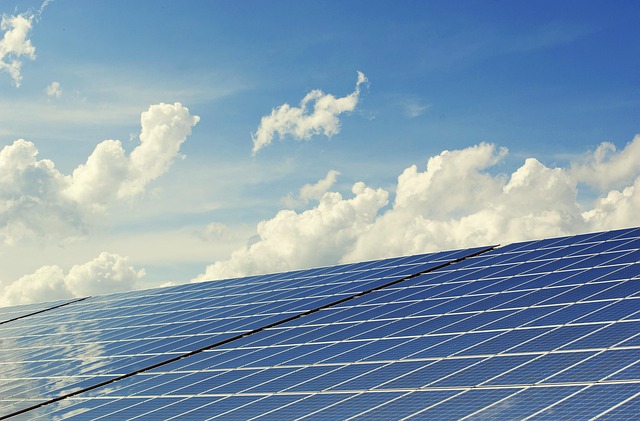Benefits Of Using Solar Lights For Home Exteriors
Solar lights have transformed the way homeowners illuminate their outdoor spaces, offering an eco-friendly and cost-effective alternative to traditional electric lighting. These innovative fixtures harness sunlight during the day and automatically provide illumination at night, eliminating the need for complex wiring or increased electricity bills. As more people seek sustainable solutions for their properties, solar lighting has become an increasingly popular choice for pathways, gardens, driveways, and security applications.

Understanding Solar Lights For Home Exteriors
Solar lights operate through photovoltaic cells that convert sunlight into electrical energy, which is stored in rechargeable batteries. During daylight hours, these panels absorb solar radiation and charge the internal batteries. As darkness falls, built-in sensors automatically trigger the lights to turn on, using the stored energy to power LED bulbs throughout the night. This self-contained system requires no external power source, making installation remarkably simple and maintenance minimal. Modern solar lights come in various styles, from decorative pathway markers to powerful motion-sensor security lights, each designed to meet specific outdoor lighting needs.
Key Benefits Of Using Solar Lights For Home Exteriors
The advantages of solar lighting extend far beyond simple convenience. Environmental benefits top the list, as these fixtures produce zero carbon emissions during operation and reduce dependence on fossil fuel-generated electricity. Homeowners appreciate the significant cost savings, with no ongoing electricity expenses and minimal maintenance requirements. Installation flexibility represents another major benefit, since solar lights can be placed virtually anywhere that receives adequate sunlight, without the constraints of electrical outlets or wiring. Safety improvements come naturally, as well-lit exteriors deter potential intruders and reduce trip hazards on pathways and stairs. Additionally, many solar lights feature automatic operation, eliminating the need to remember to turn lights on or off manually.
Choosing The Right Lights For Home Exteriors
Selecting appropriate solar lighting requires consideration of several factors. Brightness levels, measured in lumens, should match the intended purpose—pathway lights typically need 50-100 lumens, while security lights may require 700 lumens or more. Battery capacity determines how long lights will operate on a full charge, with quality units providing 8-12 hours of illumination. Solar panel size and efficiency affect charging speed and performance in less-than-ideal weather conditions. Durability matters significantly for outdoor fixtures, so look for weather-resistant materials with appropriate IP ratings for water and dust protection. Style and design should complement your home’s architecture while serving functional needs, whether you prefer modern minimalist fixtures or traditional lantern styles.
Installation And Placement Considerations
Proper placement maximizes solar light performance and longevity. Solar panels must receive direct sunlight for at least 6-8 hours daily to charge effectively, so avoid shaded areas beneath trees or overhangs. South-facing locations in the Northern Hemisphere typically receive optimal sun exposure throughout the day. Spacing between lights depends on their brightness and purpose—pathway lights generally work well when placed 6-8 feet apart, while security lights may cover broader areas. Ground stability matters for stake-mounted fixtures, ensuring they remain upright during wind and weather. Consider seasonal sun angle changes, as winter sun sits lower in the sky and may affect charging efficiency in some locations.
Cost Considerations For Solar Exterior Lighting
While solar lights require an initial investment, they offer long-term financial benefits compared to traditional electric lighting. Entry-level solar pathway lights typically range from $10 to $30 per fixture, providing basic illumination for walkways and garden borders. Mid-range options with better brightness and durability generally cost $30 to $80 each, featuring improved battery capacity and weather resistance. Premium solar security lights and decorative fixtures can range from $80 to $200 or more, offering advanced features like motion sensors, adjustable brightness, and smartphone connectivity. Installation costs remain minimal since most homeowners can place solar lights themselves without professional assistance. Over time, the elimination of electricity costs and reduced maintenance needs often result in significant savings compared to wired outdoor lighting systems.
| Product Type | Typical Price Range | Key Features |
|---|---|---|
| Basic Pathway Lights | $10 - $30 per unit | Simple illumination, stake mounting, 6-8 hour runtime |
| Mid-Range Garden Lights | $30 - $80 per unit | Enhanced brightness, weather-resistant, longer battery life |
| Solar Security Lights | $50 - $150 per unit | Motion sensors, high lumens, adjustable settings |
| Decorative Solar Fixtures | $40 - $200 per unit | Aesthetic designs, varied styles, quality materials |
| Solar Flood Lights | $80 - $250 per unit | Wide coverage, high brightness, durable construction |
Prices, rates, or cost estimates mentioned in this article are based on the latest available information but may change over time. Independent research is advised before making financial decisions.
Maintenance And Performance Optimization
Solar lights require minimal maintenance but benefit from periodic attention to maintain optimal performance. Clean solar panels every few months using a soft cloth and mild soap solution to remove dirt, pollen, and debris that can reduce charging efficiency. Check and replace rechargeable batteries every 1-2 years, as battery performance naturally degrades over time. Inspect fixtures for damage from weather or physical impact, replacing cracked lenses or damaged components promptly. During winter months in snowy regions, clear accumulated snow from solar panels to ensure adequate charging. Adjust light positions seasonally if necessary to account for changing sun angles and vegetation growth that might create new shade patterns.
Solar lighting technology continues advancing, with improvements in LED efficiency, battery capacity, and smart features making these fixtures increasingly attractive for home exteriors. By carefully selecting appropriate fixtures, placing them strategically, and providing basic maintenance, homeowners can enjoy years of reliable, eco-friendly outdoor illumination that enhances both security and aesthetics while reducing environmental impact and energy costs.




